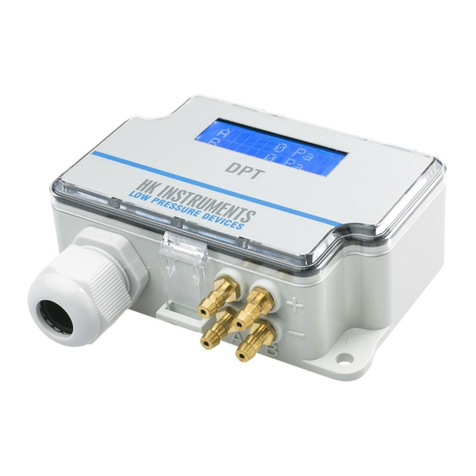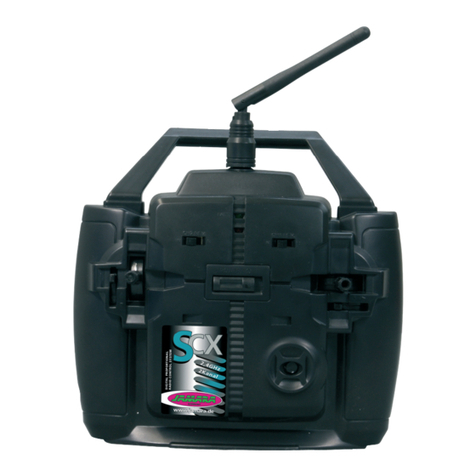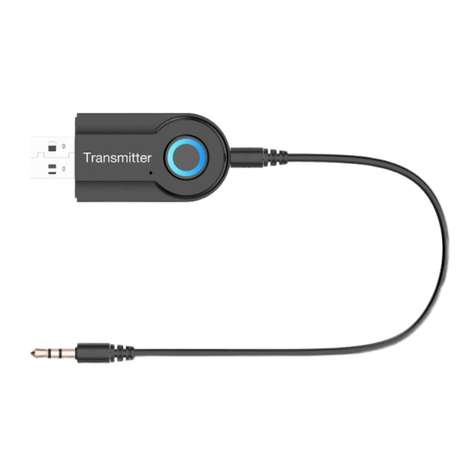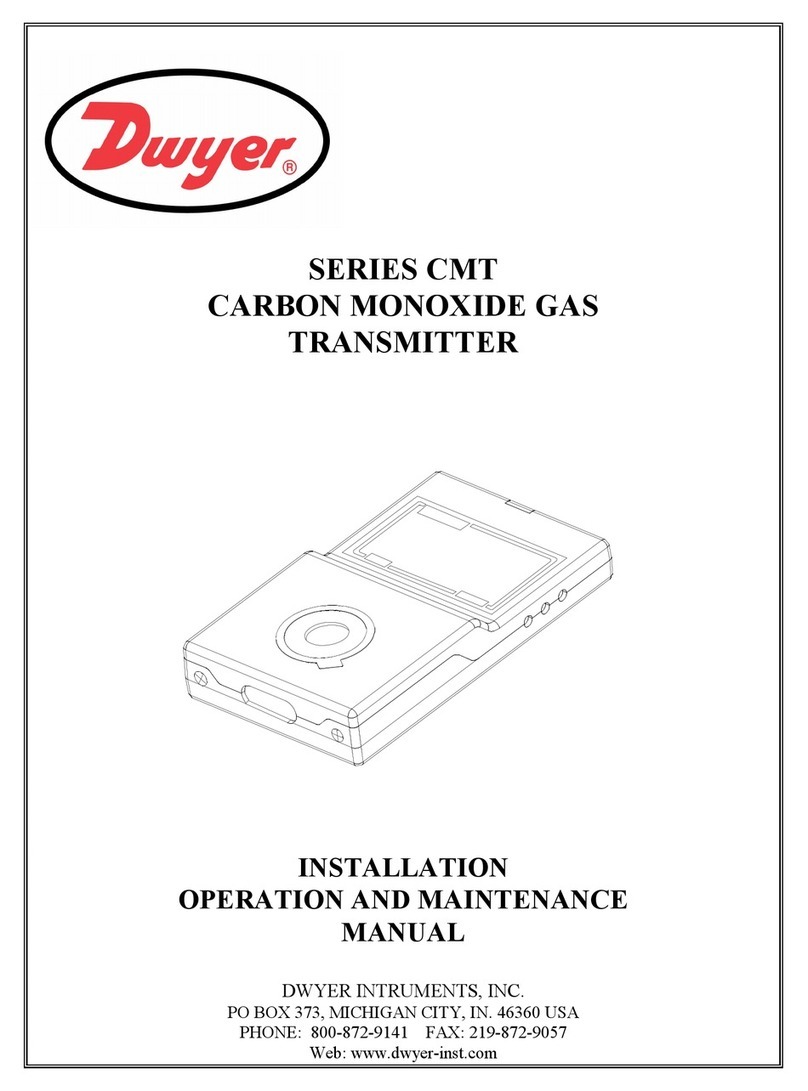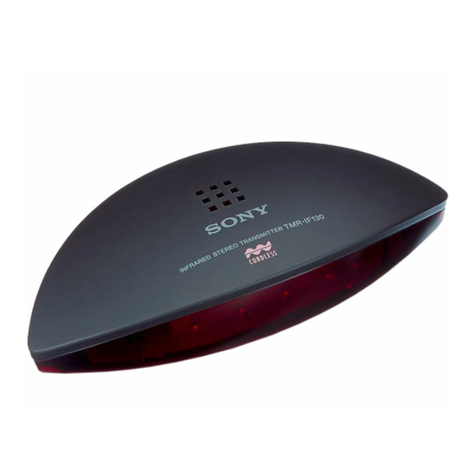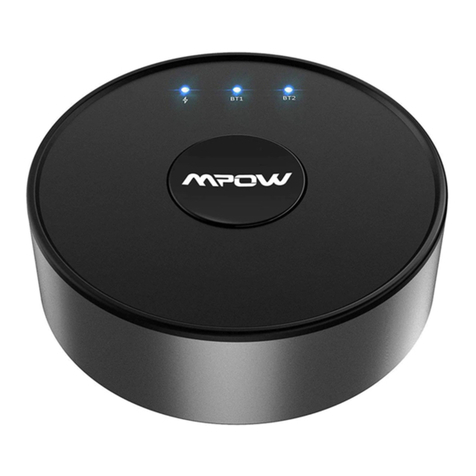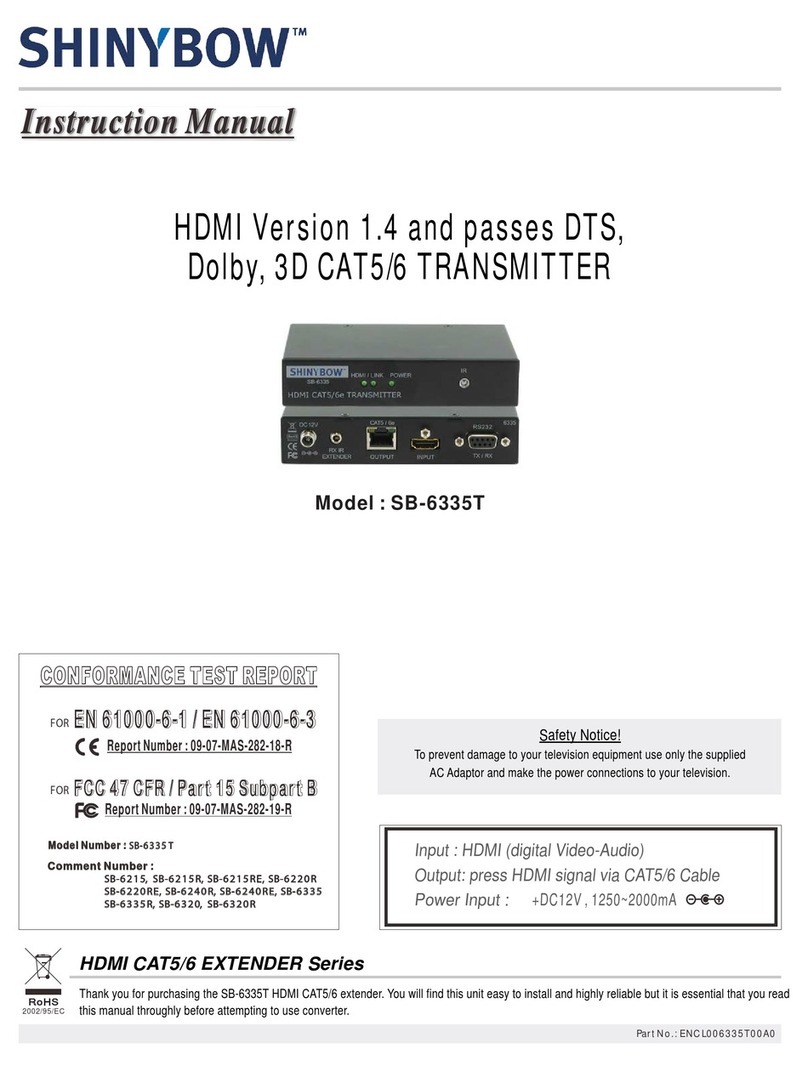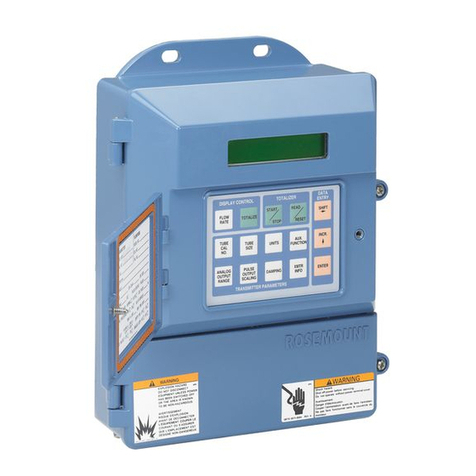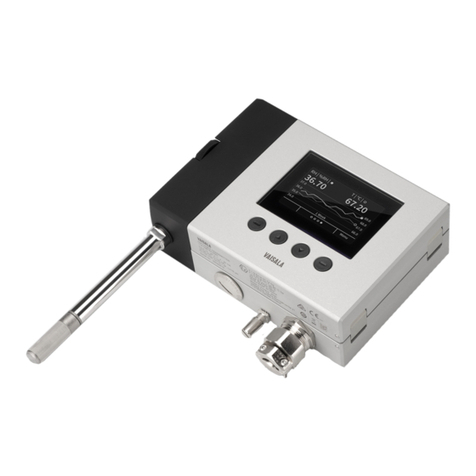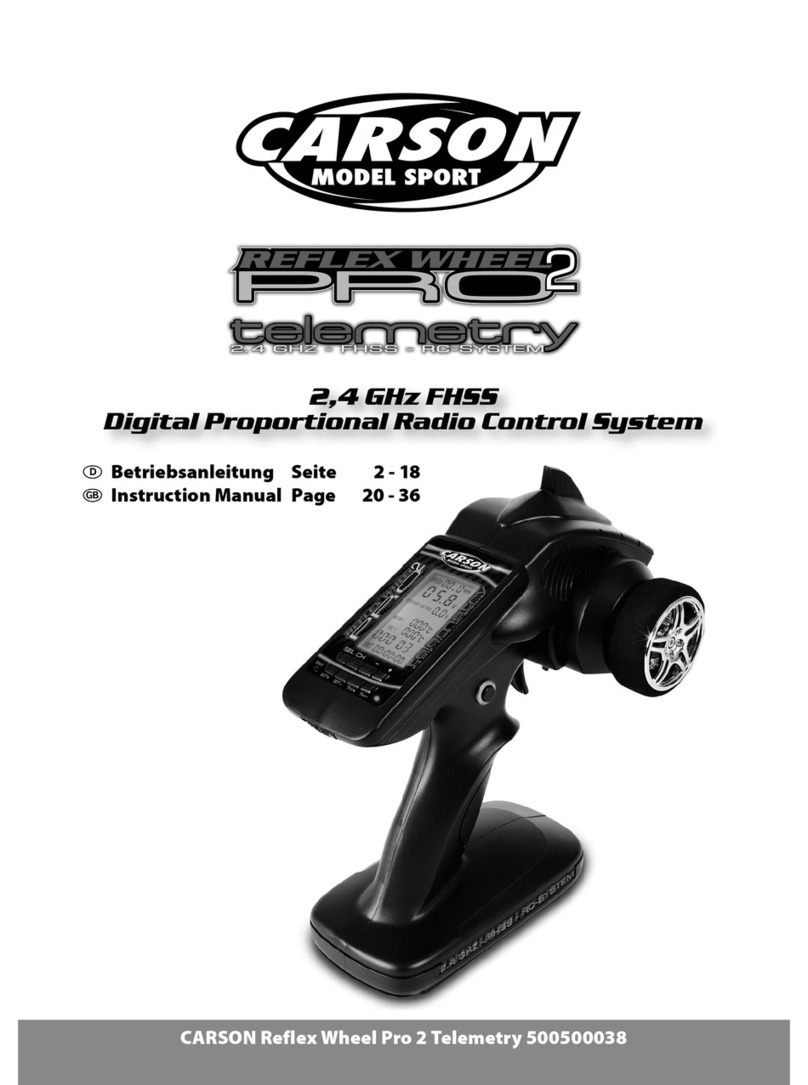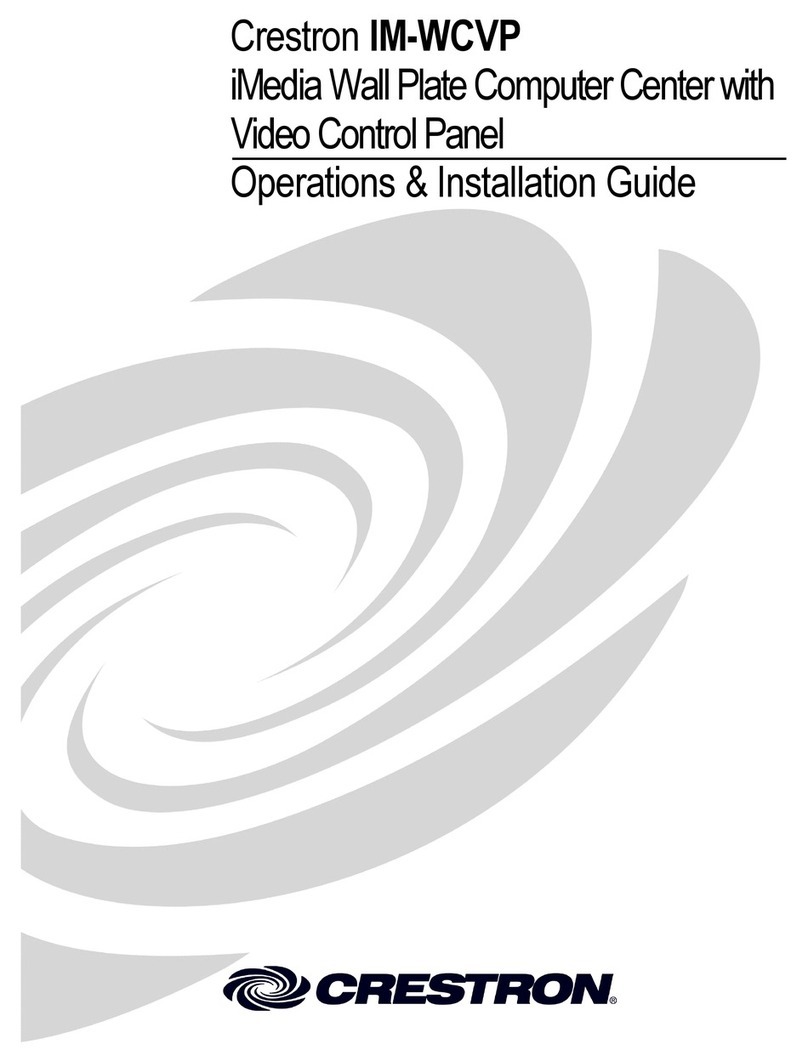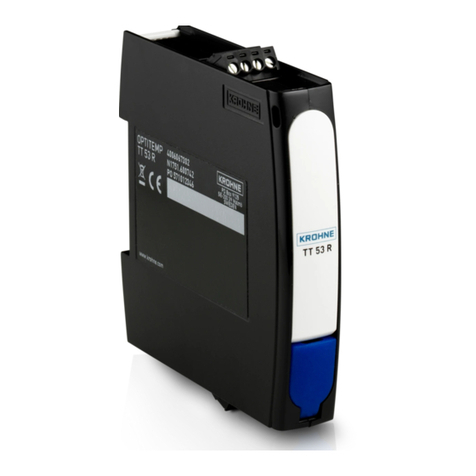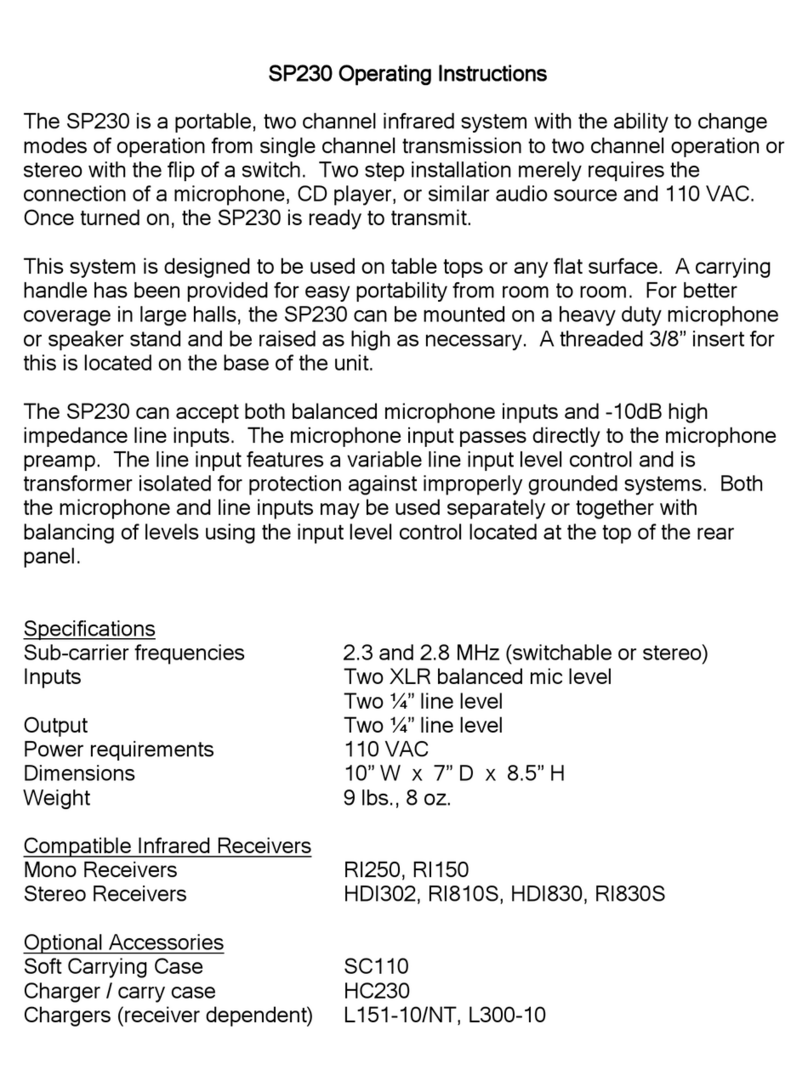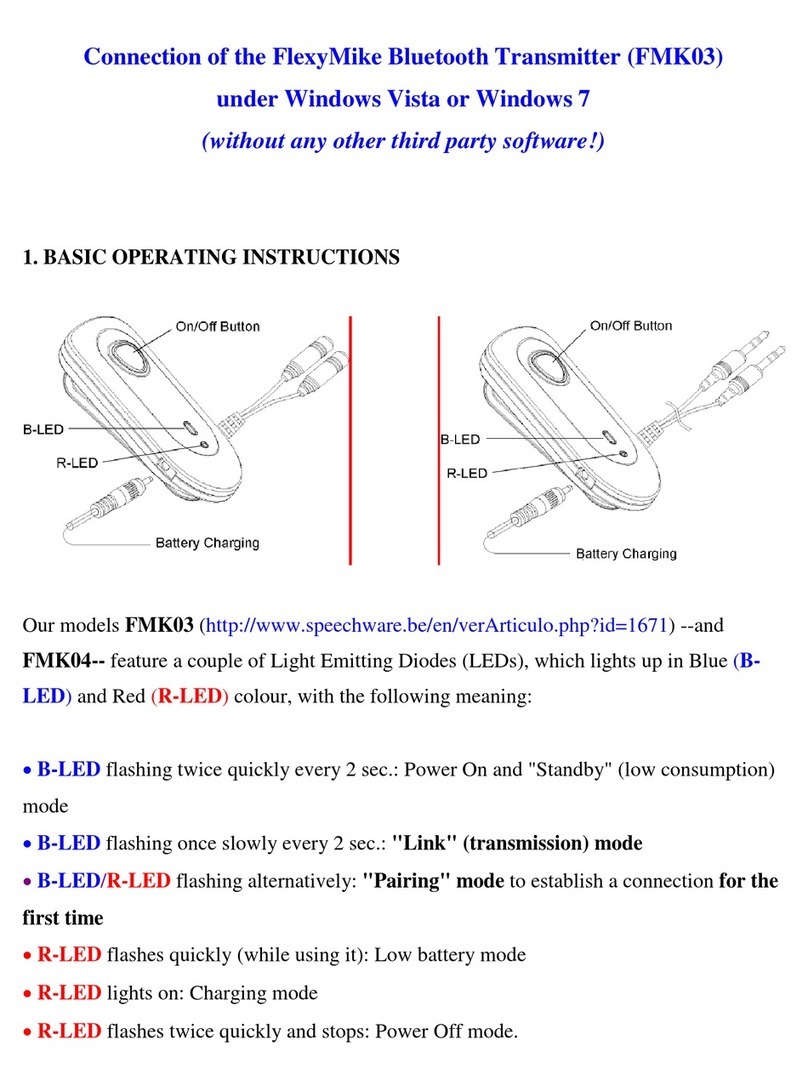ELT ELT406GPS Installation guide


ELT406 with GPS
Installation, Operation and
Maintenance Manual
Emerging Lifesaving Technologies
3211 County Road 384
Tyler, TX 76708
888.406.ELT1

HOW TO CONTACT US
EMERGING LIFESAVING TECHNOLOGIES
3211 County Road 384
TYLER, TX 75708
U.S.A.
TOLL-FREE – 888.406.ELT1
PHONE – 903.592.0014
WWW.ELT406.NET
Always consult your local Aviation Authority and Aircraft Manufacturer for
specific details on your aircraft installation and maintenance.
Email:
Dealership information contact jim@elt406.net ©
Warranty consideration contact support@elt406.net ©
Technical help contact sam@elt406.net ©
© EMERGING LIFESAVING TECHNOLOGIES: This document is the property of
Emerging Lifesaving Technologies (ELT) and contains proprietary and confidential information.
This document is available on the express condition that neither the document itself nor the
information contained therein shall be disclosed, duplicated and distributed without the express
written consent of Emerging Lifesaving Technologies.

Revision Page
Change Date Approval Description
A 3/24/2010
J Johnson Removal of 121.5 and FAA/Cospas update
B 8/12/2010
J Johnson Clarification of Self Test Information

List of Effective Pages
Title Page 1 Dec 2009
Contact Page 2 Dec2009
List of Revisions 3 Aug 2010
List of Effective Pages 4-6 Aug 2010
Table of Contents 7-9 Dec 2009
1. Introduction and Description
Page 10 Dec 2009
Page 11 Dec 2009
Page 12 Dec 2009
Page 13 Mar 2010
Page 14 Dec 2009
Page 15 Mar 2010
Page 16 Mar 2010
Page 17 Dec 2009
Page 18 Mar 2010
2. Specifications
Page 19 Dec 2009
Page 20 Aug 2010
Page 21 Aug 2010
Page 22 Aug 2010
3. Functional Operations
Page 23 Dec 2009
Page 24 Aug 2010
Page 25 Aug 2010
Page 26 Aug 2010
4. Registration
Page 27 Dec 2009
Page 28 Dec 2009
Page 29 Dec 2009
Page 30 Dec 2009

5. Typical Installation (United States)
Page 31 Dec 2009
Page 32 Dec 2009
Page 33 Mar 2010
Page 34 Mar 2010
Page 35 Dec 2009
Page 36 Mar 2010
Page 37 Mar 2010
Page 38 Dec 2009
Page 39 Dec 2009
Page 40 Dec 2009
Page 41 Dec 2009
Page 42 Dec 2009
Page 43 Dec 2009
Page 44 Dec 2009
Page 45 Dec 2009
Page 46 Dec 2009
Page 47 Dec 2009
Page 48 Dec 2009
Page 49 Dec 2009
6. Testing
Page 50 Dec 2009
Page 51 Aug 2010
Page 52 Aug 2010
7. Instructions for Continuing Airworthiness (ICA)
Page 53 Aug 2009
Page 54 Dec 2009
Page 55 Mar 2010
Page 56 Mar 2010
Page 57 Dec 2009
Page 58 Dec 2009
Page 59 Dec 2009
Page 60 Mar 2010
8. Special Canadian Maintenance Requirements (ICA)
Page 61 Mar 2010
Page 62 Mar 2010
Page 63 Dec 2009
Page 64 Dec 2009
Page 65 Mar 2010
Page 66 Dec 2009

9. Instructions for Continuing Airworthiness (ICA) Other Countries
Page 67 Dec 2009
Appendix A
Page 68 Dec 2009
Page 69 Dec 2009
Appendix B
Page 70 Dec 2009
Page 71 Dec 2009
Appendix C
Page 72 Dec 2009
Page 73 Dec 2009
Page 74 Dec 2009
Page 75 Dec 2009
Page 76 Dec 2009
Page 77 Dec 2009
Page 78 Dec 2009
Page 79 Dec 2009
Page 80 Dec 2009
NOTE Appendix C is maintained by Cospas Sarsat and may be changed without notice.
See their website at http://www.itu.int/cgi-bin/htsh/glad/cga_mids.sh
Appendix D
Page 81 Mar 2010
Page 82 Mar 2010

Table of Contents
Title Page……………………………………………………………………………………….... 1
Contact Page…………………………………………..……………….………………………… 2
List of Revisions …...…………………………………………………………………………….3
List of Effective Pages ……………………...…..………..……………………………………. 4-6
Table of Contents…………………………………...………………………………………….. 7-9
1. Introduction and Description
1.1 Basic Information.................................................................................................................. 11
1.2 Application....................................................................................................................... 11-12
1.3 System Description................................................................................................................ 13
1.4 Parts List………………………………………………………….…......………………..14-17
1.5 Weights ...........……………………………………………………...……………………… 18
1.6 Unpacking and Preliminary Inspection …………………………….…………..….……… 18
1.7 Special Shipping Instructions..................................................................................................18
2. Specifications
2.1 Operating Frequencies.......................................................................................................... 20
2.2 Output Power........................................................................................................................ 20
2.3 Activation............................................................................................................................... 20
2.4 Temperature...........................................................................................................................21
2.5 Aircraft Power Requirements................................................................................................ 21
2.6 Mechanical Characteristics.................................................................................................... 21
2.7 Electrical Characteristics........................................................................................................ 21
2.8 Coaxes.................................................................................................................................... 22
2.9 Minimum Wiring Requirements …………….………………………………………..……. 22
3. Functional Operations
3.1 Accuracy................................................................................................................................. 24
3.2 Remote Switch Operation...................................................................................................... 25
3.3 Operation............................................................................................................................... 25
3.4 Self-Test Mode....................................................................................................................... 25
3.5 Programming........................................................................................................................ 26
3.6 Certification.......................................................................................................................... 26
4. Registration
4.1 Cospas/ Sarsat Registration………………………….……………….…….………..………28
4.2 Warranty Registration …………………………….……………....…………….…….……..28
4.3 FAA Form 337........................................................................................................................ 29
4.4 Weight and Balance Report………….…………………………….........................……… 29
4.5 Radio Station License - USA.................................................................................................. 29
4.6 Canadian Registration........................................................................................................... 30
4.7 World Wide Registration....................................................................................................... 30
4.8 Logbook Entry........................................................................................................................ 30
4.9 Special Programming …………………….………………………………………….…..… 30

5. Typical Installation (United States)
5.1 Introduction to Installation.................................................................................................... 32
5.2. Special Considerations ……………………………………………………...……….……. 32
5.2.1 Unit Survivability………………………………………………..…....…..…….……. 32-33
5.2.2 Electrical Paths ………………………………………………..…………..……....……….34
5.2.3 Electrical Loading of Aircraft System................................................................................ 34
5.2.4 Antenna Placement ………………………………………..………………………..……..34
5.3 ELT Mounting....................................................................................................................... 35
5.3.1 Metal Aircraft..................................................................................................................... 35
5.3.2 Composite or Fabric Aircraft............................................................................................... 36
5.4 Antenna Mounting................................................................................................................. 37
5.4.1 Metal Aircraft................................................................................................................ 38-40
5.4.2 Composite or Fabric Aircraft.......................................................................................... 41-42
5.5 Mount Remote Switch........................................................................................................... 43
5.6 Optional Audio (“buzzer”) Installation................................................................................... 44
5.7 Aircraft Wiring........................................................................................................................ 45
5.7.1 Basic Wiring 406 ELT…………………………………………....…….…..………...…... 46
5.7.2 Basic Wiring 406 ELT with GPS………………………………................................…... 47
5.7.3 Basic Wiring 406 ELT with GPS and External Buzzer………………………….………. 48
5.7.4 Connect RF Coaxial Cable ……………………………………………………...….……. 49
6 Post Installation Testing
6.1 Self-Test................................................................................................................................ 51
6.2 Self-Test Failure Chart............................................................................................................ 51
6.3 Transmitter Test..................................................................................................................... 52
6.4 Record of Inspection …………………………………………………...…………….…….. 52

7. Instructions for Continuing Airworthiness (ICA)
7.1 Regulations . .. …………………………………………………..……….………………. 54
7.2 Battery Service....................................................................................................................... 54
7.3 Monthly Test.......................................................................................................................... 55
7.4 Annual Test ……………………………………………….……………….………….……. 56
7.5Corrosion............................................................................................................................... 56
7.6 Battery Replacement............................................................................................................. 57
7.7 Battery Disposal..................................................................................................................... 57
7.8 Digital Message Verification………………………………………………….
…………… 57
7.9 Antenna Inspection…………………………………………………………………………. 58
7.10 G-switch Operation………………………..…………..………………………………..… 58
7.11 Records Keeping…………………………………………..……………………………… 58
8.Special Canadian Maintenance Requirements (ICA)
8.1 Performance Test................................................................................................................... 60
8.2 Frequency Test....................................................................................................................... 61
8.3 Peak Power Test..................................................................................................................... 61
8.4 Message Verification............................................................................................................. 62
8.5 Corrosion Test........................................................................................................................ 62
8.6 Battery Replacement............................................................................................................. 63
8.7 Audio Modulation................................................................................................................. 64
8.8 Current Draw......................................................................................................................... 64
8.9 Automatic Activation Systems Check.................................................................................... 64
8.10 Digital Message Verification................................................................................................ 65
8.11 Documentation of Inspection.............................................................................................. 65
8.12 Special Shipping Instructions............................................................................................... 65
9. Instructions for Continuing Airworthiness (ICA) Other Countries…………………….. 67
Appendix A Glossary of Terms............................................................................................ 68-69
Appendix B Environmental Testing.................................................................................... 70-71
Appendix C Country-Code Index…………………………….………………………….. 72-80
Appendix D Trouble Shooting Guide……………………………………...…………….. 81-82

Special Requirements of TSO 126A
The conditions and test for TSO approval of this article are minimum
performance standards. Those installing this article, on or in a specific type or
class of aircraft, must determine that the aircraft installation conditions are
within the TSO standards. TSO articles must have separate approval for
installation in an aircraft. The article may be installing only to CFR part 43 or
the applicable airworthiness requirements.
Special Notice to Airman
The Emerging Lifesaving Technologies’ ELT is equipped with an internal GPS
receiver. This allows the ELT to report to COSPAS-SARSAT within 100
meters world-wide. It is always important to check for NOTAMs along your
route of flight for any situation that may be out of the ordinary. Although
extremely rare, the US Government can turn off the GPS system selectively.
Caution should be taken to ensure that there are no NOTAM concerning
degraded or inoperable GPS service during your proposed flight. In the advent
of loss of GPS signal, the 406 portion of the ELT will continue to operate as
normal.
Special Notice to Airman
The Emerging Lifesavings Technologies’ ELT406GPS is not equipped with a
121.5MHz transmitter. COSPAS-SARSAT ceased monitoring the 121.5MHz
frequency as of February 9, 2009. This unit provides exact Lat/Long to
COSPAS-SARSAT using an internal GPS receiver within an accuracy of less
than 100 meters.

1.1 Basic Information
How does it work?
The Emerging Lifesaving Technologies ELT406GPS is a self-contained Emergency Locator
Transmitter that combines the new standard digital 406.037 MHz radio distress beacon with GPS
generated latitude/longitude location data. The signal is received by the Cospas/Sarsat satellite-
based search and rescue (SAR) system. In flight, the GPS unit automatically updates your
present position every 15 seconds. Upon activation, a 5 watt signal bursts every 50 ± 2.5 seconds
to the Global Satellite System. Your location within 25 meters* will then be transmitted to search
and rescue personnel. * Note Currently the Cospas Sarsat system only will receive Lat/Long in 4
sec increments. This represents about 300 feet on the equator.
Who’s in Control?
The International Cospas-Sarsat Program provides accurate, timely, and reliable distress alert
and location data to help search and rescue authorities assist persons in distress.
COSPAS () is an acronym for the Russian words "Cosmicheskaya Sistema Poiska
Avariynyh Sudov" ( ), which translates to
"Space System for the Search of Vessels in Distress".
SARSAT is an acronym for Search And Rescue Satellite-Aided Tracking. The SARSAT system
was developed in a joint effort by the United States, Canada, and France. In the United States,
the SARSAT system is under the authority of the National Oceanic and Atmospheric
Administration (NOAA) which is a part of the U.S. Department of Commerce.
For more information, visit:
http://
See Figure 1.1 provided by Cospas/Sarsat for more information.
1.2 Application
The 406ELT is an AF (automatic fixed) emergency locater transmitter that is designed for
aircraft use.This manual provides “acceptable data” to support installation into certified
aircraft. This installation requires that a certified person installs and completes the required
paperwork. For US registered aircraft that may require a (FAA Form 337). See section 4 of this
manual for a more detailed explanation of required documentation.
For Canadian registered aircraft the requirements of Canadian Aviation Regulations Part V, CAR
551.104 applies. Each country has their own requirements and you should contact the local
authority for specific details in returning the aircraft to service.
ELT406GPS has met or exceeded the minimum performance standards required for TSO
approval. A TSO (Technical Standard Order) provides minimum standards of operation and
safety for any given item. It is the responsibility of the installer of this equipment to ensure that
the aircraft installation meets both the local governing authority and the airframe manufacturers’
instructions.

The TSO was issued to the ELT406 w/GPS as a system and this system was designed, tested and
certified as a unit. All four components are required to meet the TSO. Substitution of any part is
strictly prohibited. They will include in some variant:
• ELT Transmitter w/ Integral Battery
• ELT Mounting Tray
• ELT Antenna
• ELT Remote Switch
Figure 1.1 provided by Cospas/Sarsat

1.3 System Description
ELT406GPS PN 51220-()products are type AF (automatic fixed beacons) and are equipped with
an internal GPS; Helicopter models PN 51220-H42 are equipped with a 5 axis G-switch module
that allows the ELT to be activated in a multi axes.
Certain functions of the different variants are described by the FAA in Notice 8150.3. “Non-
TSO’d functions”.
These “non-TSO’d” functions have the following characteristics:
•Due to the nature of helicopter operations it is important to note that there is normally
operation in more than just the forward axis. The additional 5 axis “G” switch continues
to provide crash sensing in the axes other than “forward” at a nominal 12 “G” threshold.
This may change the performance specifications, software, hardware, environmental, or
qualification levels of the standard ELT 406 i.e. vibration etc.
•A GPS receiver may be installed in the unit and will function independently of the base
unit. External power is required to operate the GPS system.
•There are no changes to the installation and operating instructions or limitations. The
instructions for continued airworthiness (ICA) remain unchanged, for this non-TSO’d
function.
•No additional failure modes or hazards introduced by use of the non-TSO’d functions
have been noted or anticipated.
•None of these functions change any of the TSO’d functions of this unit.
The system has been designed to ensure that any inputs, whether shorts or opens in the harness or
any effect of electrostatic discharge (ESD) and connections to +28V or ground can cause the unit
to fail from automatic activation.
The only exception is the coax connected to the antenna. It must remain connected and
undamaged to ensure proper functions after automatic activation. Any failure can be tested by
the pilot using the cockpit controller. See section 6 for proper testing.
The RF output is through a single BNC connector. A second SMA connector is used between
the antenna and the unit for receiving real-time GPS information. All functions are under
microprocessor control. Software is approved per the requirements of RTCA/DO-178B.
The battery pack consists of three D-size, LiMnO2 cells mounted on the rear cover of the unit.
See Sec 7 for detail on battery replacement. These are 5 year life expectancy batteries. An
internal clock keeps up with actual battery use and alerts the pilot when there is less than the
minimum required battery life as specified by FAR 91.207(c).
406ELTs with GPS come with an antenna, remote switch, mounting plate, coaxes, and install
kits. Standard hardware and wiring are not supplied. See section 2.9 for details

1.4 Parts List
Model Number Description Part Number




1.5 Weights
Nomenclature Part Number Weight CG
ELT406GPS 51220-() 2.7 lbs 4.0
Universal Mounting Plate 217-406-062 .34 lbs 3.8
Remote Switch 816-59-06 .15 lbs 1.8
406 with GPS Antenna 114-042-() .85 lbs 5.4
Replacement Battery 217-406-001 1.2 lbs 4.4
Typical System
Total Weight
4.04 lbs
Note CG is measured in inches from the front of the box to the center of gravity of the item.
1.6 Unpacking and preliminary inspection
Remove the articles from the box and inspect for any physical damage. Notify the shipper and
dealer immediately if it is determined that the unit might have been damaged in transit.
If the LED flashes at the beacon, then reset the G-Switch by pressing the TEST/RESET button
once. The Beacon will automatically return to an ARM state. The light should go out.
1.7 Special Shipping Instructions
If for any reason this unit must be shipped, it is important to send all components of the system.
No harnesses or antennas should be connected.
Caution should always be taken not to send out a false emergency signal to
Cospas/Sarsat. A false signal unduly activates precious SAR resources
.

This Page is Intentionally
Blank
Table of contents


